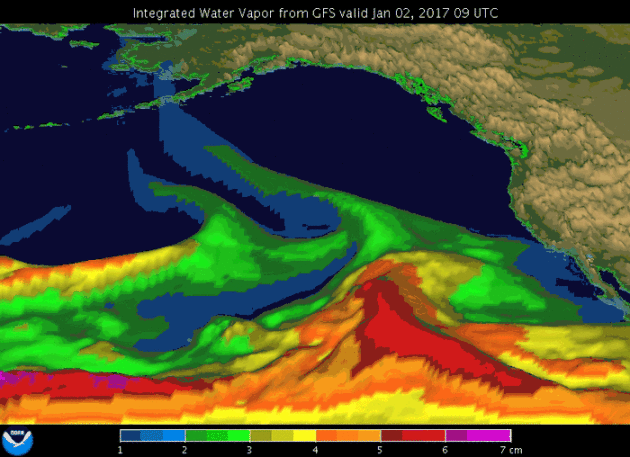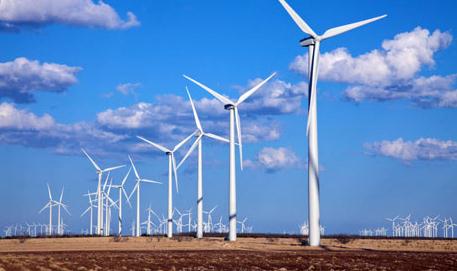54 F. high temperature yesterday.
31 F. average high on February 20.
43 F. maximum temperature on February 20, 2016.
February 21, 1965: Strong winds occur, reaching speeds of up to 45 mph in the Twin Cities.
Flooding Rains in February? Welcome to Fake Spring
A rough, back-of-the-napkin calculation suggests we've been cheated out of near 2 feet of snow this winter. Two of our biggest storms, yesterday and Christmas Day, fell as a soaking rain. Had it been consistently cold enough for snow most of this (alleged) winter, like it was a generation ago, we'd have 50 inches, instead of 27. And there might still be snow on the ground.
Is that too much to ask for in February?
Hey, I'm enjoying the freakishly premature outbreak of spring like everyone else. It's a symptom of Minnesota's warming winters. The 60-degree wow factor comes with a downside: stress and dislocation for Minnesotans who make a living from cold and snow. Have you bumped into any happy snowmobilers or cross country skiers lately? More ticks and mosquitoes surviving through the winter. Stress on fruit trees, and a longer pollen season. 60s in February is a mixed blessing.
Snowy redemption on Friday? Don't bet on it. A few slushy inches may fall, but the heaviest snow band sets up south/east of the Twin Cities, where plowable amounts are likely.
Old Man Winter is very much on life-support, but don't retire the coat (or snow shovel) just yet.

84-Hour Future Radar. Here is NOAA's 12 KM NAM model, showing moisture slowly diminishing for the west coast by late Wednesday and Thursday, an interesting-looking storm pinwheeling across the Gulf off Mexico into Florida (tropical depression potential?) and a late week storm pushing show, ice and rain into the Midwest. Animation: Tropicaltidbits.com.

Another Near-Miss? It's still way too early to fixate on how many inches of slush may pile up later in the week, but the 00z NAM keeps the heaviest snow band south of the Twin Cities; the best chance of a few inches of snow from Denver to Sioux City and Waterloo to Rochester, La Crosse and Tomah.
Going - Going - Gone. In the immediate much of the frost is already out of the ground, well ahead of schedule, according to the University of Minnesota.
California Braces For More Rain. How Bad Can It Get? Here's an excerpt from a story at The New York Times: "...This latest storm is what’s called an “atmospheric river” — a weather event more commonly known as the “pineapple express.” It is moist tropical air from the central Pacific trapped in a band between different pressure systems, Mr. Kurth said. When it hits California, it unleashes a high amount of rain. “It’s like a fire hose of moisture when we get these atmospheric rivers,” he said. An atmospheric river is not especially unusual. “We usually get a couple every year,” he said. “On average we get maybe three to five or so. This year we’ve gotten quite a few more.” How many more? “More than a dozen prior to this one,” he said..."
Photo credit: "Flood water crossed over Interstate 5 in Williams, Calif., about 60 miles north of Sacramento on Saturday." Credit Randy Pench/The Sacramento Bee, via Associated Press.
* Another atmospheric river system is impacting parts of California this morning, bringing heavy rain with it to areas like San Francisco and Sacramento.
* Rainfall amounts of 1-5” will be possible across northern California through Tuesday, with most of that falling today. This heavy rain will lead to widespread flash flooding across the region.
* Damaging winds will also be possible, especially as we head toward the evening hours. Wind gusts of 40-60+ mph will be possible.








Summary: Heavy rain is once again impacting parts of California into early Tuesday, with potential rainfall amounts of 1-5” in northern California expected. This includes both San Francisco and Sacramento. This heavy rain – potentially falling at 1” per hour throughout the day – will lead to widespread flash flooding across the region, and high rivers over the next several days. Wind gusts will also be on the increase, with gusts of 40-60+ mph likely later today, causing power outages and downed trees. The good news is that drier conditions will start to move in during the second half of the week, with only some periods of light rain expected.
D.J. Kayser, Meteorologist, AerisWeather

Animation credit: NOAA/ESRL/PSD.
Photo credit: "Power lines are bent and toppled by a storm near Urh Lane and Higgins Road on the Northeast Side late Sunday night bringing with it heavy rain and one confirmed tornado." CPS Energy
The Other "Big One". California's Pending Megaflood. Science fiction? Let's hope so, but waterlogged residents of California could endure something far worse. Here's an excerpt from Curbed San Francisco: "...The
results are similar to a hurricane, except they can last for weeks.
USGS tapped 117 “scientists, engineers, public-policy experts, [and]
insurance experts” to suss out what it would look like:
The Central Valley experiences flooding 300 miles long and 20 or more miles wide.Serious flooding also occurs in Orange County, Los Angeles County, San Diego, and the San Francisco Bay Area. Wind speeds reach 125 miles per hour. [...] Hundreds of landslides damage roads, highways, and homes. Property damage exceeds $300 billion, most from flooding.[...] Agricultural losses and other costs to repair lifelines, dewater (drain) flooded islands, and repair damage from landslides, brings the total direct property loss to nearly $400 billion. Flooding evacuation could involve 1.5 million residents.
In
all, 25 percent of the state could end up submerged. And the total cost
could surge as high as $725 billion—more than three times the estimate
of a mega-earthquake. $1.17 billion of that would be in San Francisco
alone..."
Map credit: "
Los Angeles: The World's Most Traffic-Clogged City? So says a new report highlighted at ABC News: "Low
fuel prices and economic stability are straining the country's
roadways, leading to congestion that cost U.S. drivers nearly $300
billion in wasted gas and time last year, according to a new report
released today. Los Angeles had the worst traffic in the world among
1,064 cities studied by traffic analytics firm INRIX. L.A. also topped
the Kirkland, Washington, firm’s list the year before. On average, Los
Angeles motorists spent about 104 hours stuck in traffic during the peak
commuting hours of 2016, contributing to a loss of $2,408 per driver,
or about $9.7 billion collectively, in wasted fuel and productivity,
according to the firm’s Global Traffic Scorecard report..." (Image credit: INRIX Global)


A Warning from Bill Gates, Elon Musk and Stephen Hawking.
It may not be an actual robot, but automation and AI will replace not
only blue-collar manufacturing jobs but many white-collar jobs as well.
It's already happening and America needs a plan to keep people gainfully
employed. Here's an excerpt from Medium: "...There’s a rising chorus of concern about how quickly robots are taking away human jobs. Here’s Elon Musk on Thursday at the the World Government Summit in Dubai:
“What to do about mass unemployment? This is going to be a massive social challenge. There will be fewer and fewer jobs that a robot cannot do better [than a human]. These are not things that I wish will happen. These are simply things that I think probably will happen.” — Elon Musk
What is Killing the American Dream: NAFTA or Automation? CNN Money takes a look at Michigan, where there is an ongoing debate about the virtues of robotics and automation.
Photo credit: Berdoll Pecan Farm.
TODAY: Peeks of mild sun. Winds: SW 10-15. High: near 60 (record is 59 in 1930)
TUESDAY NIGHT: Partly cloudy. Low: 43
WEDNESDAY: Last mild day, showers up north. Winds: W 7-12. High: near 60 (record is 57 in 1930)
THURSDAY: Mostly cloudy and cooler. Dry. Winds: N/NE 8-13. Wake-up: 31. High: 41
FRIDAY: Couple inches of snow? More south/east. Winds: N 10-15. Wake-up: 30. High: 34
SATURDAY: Partly sunny and brisk. Winds: NW 5-10. Wake-up: 20. High: 33
SUNDAY: Mix of clouds and sun. No drama. Winds: W 7-12. Wake-up: 19. High: near 40
MONDAY: Milder front arrives. Passing shower. Winds: SE 8-13. Wake-up: 24. High: 43
Climate Stories....
The Problems with Winter Warming. I'm enjoying the extended streak of spring fever in February (!) as much as everyone else, but at the risk of being Debby Downer there are some downsides to spring coming extra-early. Here's a post from Climate Central: "The decrease in winter cold effectively makes the winter shorter. While that might sound good at first, it comes with consequences for recreation, farming, and the environment. In colder climates, winter-based recreational activities, like skiing, ice fishing, and snowmobiling will become less prevalent. More disease-carrying insects, like mosquitoes and ticks, will survive through a milder winter. Declining snow pack leads to lower reservoir levels, providing less water for irrigation of crops. Fruit trees, which need to become dormant in the winter to blossom in the spring, may produce smaller yields. Pollen counts will rise, which can trigger respiratory illnesses for allergy sufferers."
Humans Changing Climate 170 Times Faster than Natural Forces. Yale Environment360 has a summary of new research: "Humans are changing the climate 170 times faster than natural forces, according to a new study published in the peer-reviewed journal The Anthropocene Review. The research is the first mathematical equation to compare the impact of human activity on current climate to naturally occurring changes. For 4 billion-plus years, astronomical and geophysical factors, such as solar heat output and volcanic eruptions, were the dominating influences on Earth’s climate, argue study authors Owen Gaffney and Will Steffan, climate scientists at Stockholm University and Australian National University, respectively. But over the past six decades, human activities like the burning of fossil fuels and deforestation “have driven exceptionally rapid rates of change,” the study says..."
• We are on the side of facts.
• We are on the side of science.
• We are on the side of the planet.
We promise that we will continue to report—factually and fairly—on how climate change is altering the Earth..."
No comments:
Post a Comment